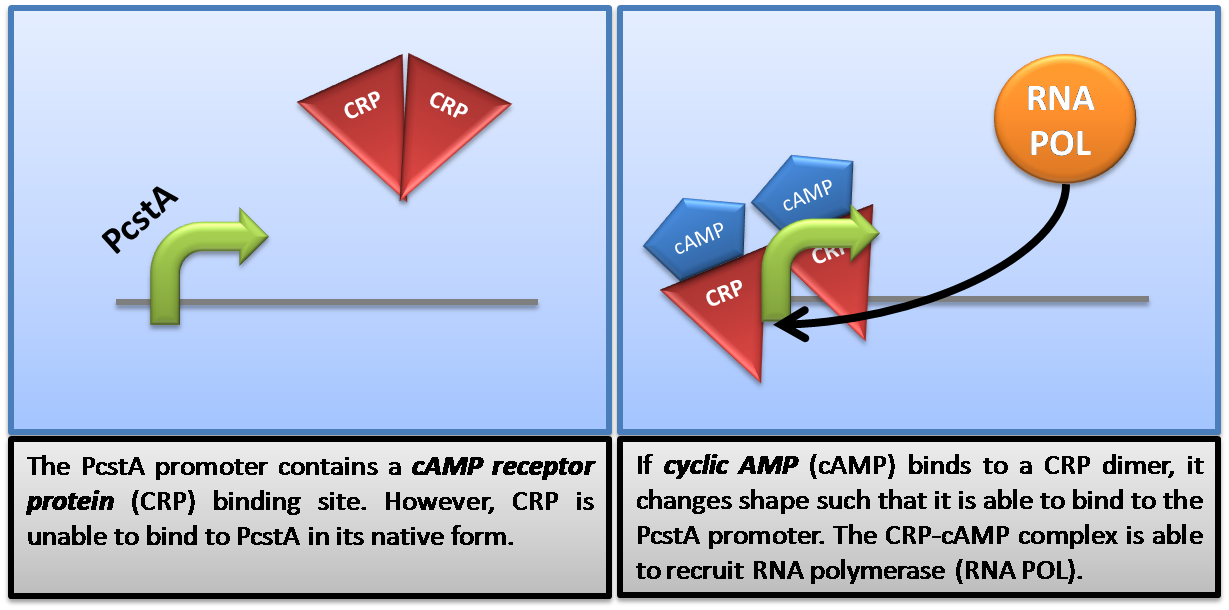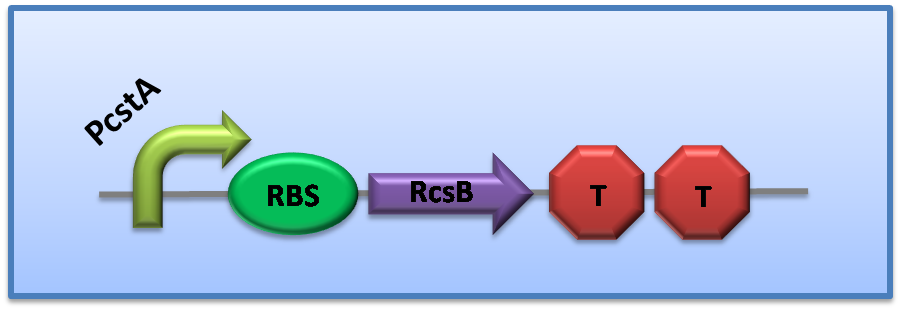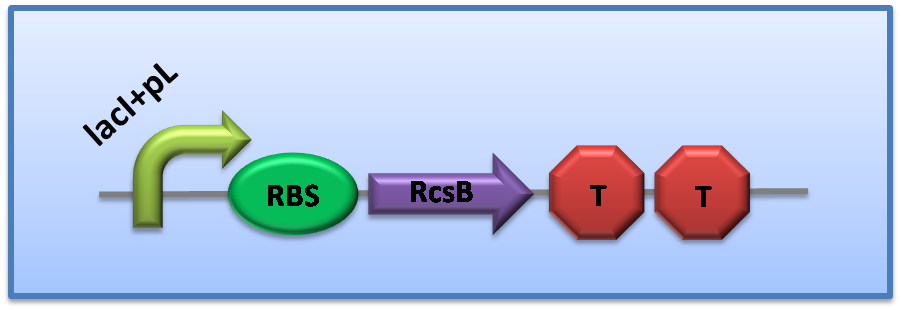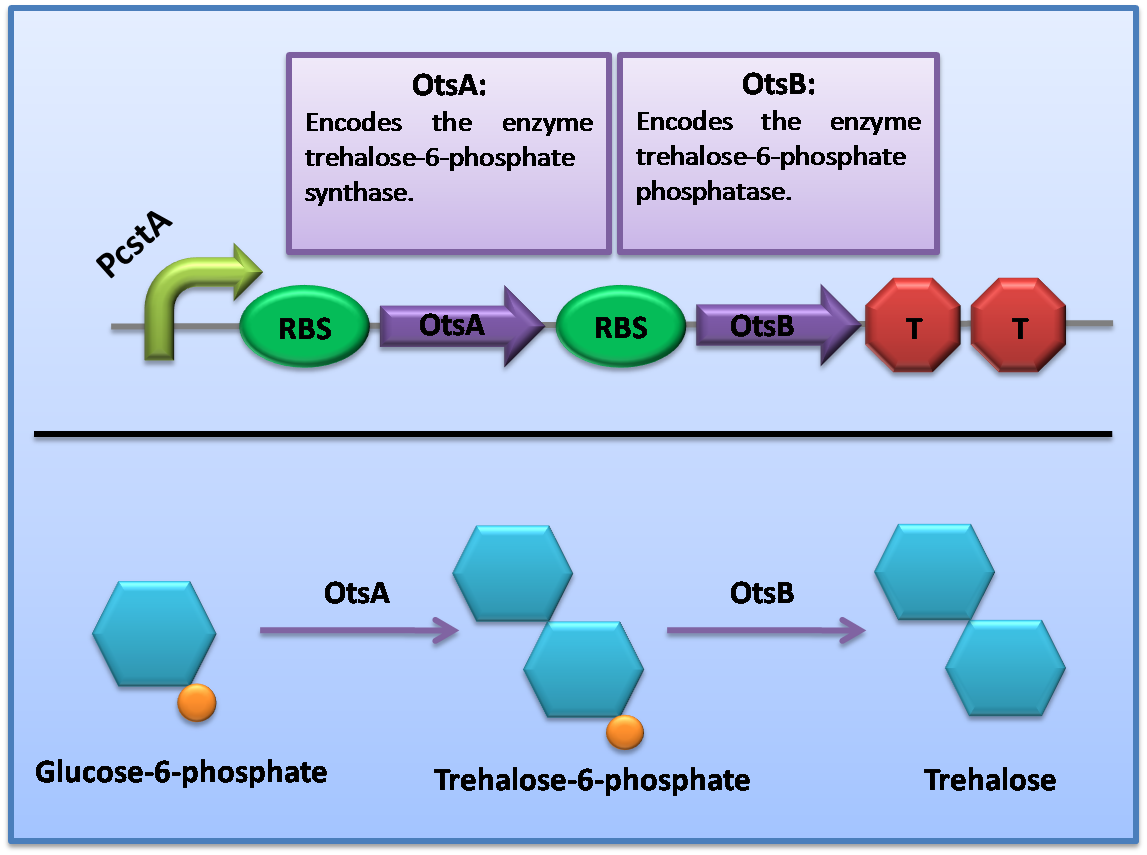Team:Imperial College London/M2
From 2009.igem.org

Contents |
 Module 2 - Encapsulsation
Module 2 - Encapsulsation
Module 2 guards our chassis against the rigours of stomach acid and freeze drying. This is achieved by the synthesis of the exopolysaccharide colanic acid and the disaccharide trehalose.
Initiation:
Module 2 is triggered by a rise in levels of intracellular cyclic AMP (cAMP). This is becuase cAMP facilitates the dimerisation of the transcription factor CRP which induces transcription from the PcstA promoter. The rise in cAMP is correlated with a fall in levels of the primary carbon source (glucose). Thus, by controlling the initial amount of glucose present in the system, we achieve a timer function for the start of Module 2.
 Acid Resistance Theory:
Acid Resistance Theory:
By 'hacking' E.coli’s endogenous acid resistance pathways in three places we induced the formation of a safe colanic acid microcapsule that protects our chassis from the harsh acidic conditions of the stomach. Without encapsulation, our polypeptides would be denatured and degraded by stomach acid and digestive proteases respectively.
The Encapsulation Triple Hack:
 Acid Resistance Results:
Acid Resistance Results:
To characterise colanic acid encapsulation, we assembled the following testing constructs:
 Freeze Drying Theory:
Freeze Drying Theory:
In addition, Module 2 involves the synthesis of the preservative trehalose. This is a disaccharide that allows us to freeze dry the chassis without damaging either its structural integrity or the intracellular polypeptides. OtsA and OtsB are the two genes required for trehalose production. Freeze drying is an important storage mechanism that will facilitate the widespread dispersal of E.ncapsulator technology.
 Freeze Drying Results:
Freeze Drying Results:
To characterise the protective effect of trehalose against freeze drying, we assembled the following testing constructs:
Unfortunatly, we did not have time to ligate together both OtsA and OtsB and were therefore unable to do any functional assays.
Finale:
The end of Module 2 occurs when the temperature of the culture is raised to 42 degrees centigrade. This temperature shift triggers the initiation of Module 3 in which the genome is deleted.
Project Tour


Module 2 Contents





 "
"










